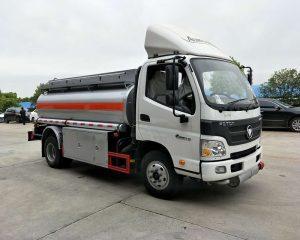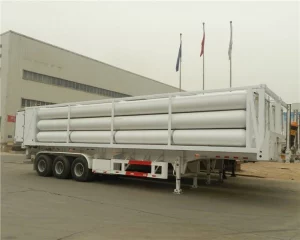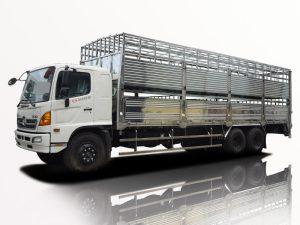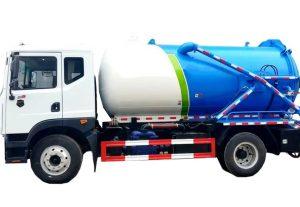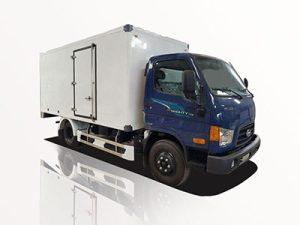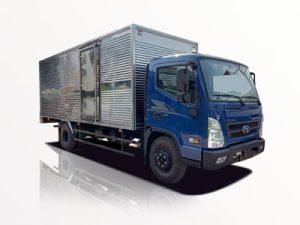Monday to Saturday - 8:00 -17:30
Understanding Standard Size Dump Trucks: A Comprehensive Guide
Dump trucks are essential vehicles in construction, mining, and other industries requiring durable transportation. Among the myriad types of dump trucks, the standard size dump truck stands out for its versatility and efficiency. This article aims to provide an exhaustive overview of standard size dump trucks, including their dimensions, types, applications, and tips for choosing the right one.
Table of Contents
- What is a Standard Size Dump Truck?
- Dimensions and Capacity
- Types of Dump Trucks
- Common Uses of Standard Size Dump Trucks
- Choosing the Right Dump Truck
- Maintenance Tips for Dump Trucks
- Safety Considerations
- Cost Analysis
- Future Trends in Dump Trucks
- FAQ
What is a Standard Size Dump Truck?
A standard size dump truck is typically defined by its cargo capacity ranging from 10 to 14 cubic yards. These trucks are equipped with an open-top rear bed that can be lifted to unload materials such as gravel, asphalt, or sand. Unlike larger dump trucks, standard size models strike a balance between carrying capacity and maneuverability, making them ideal for urban construction sites and small to medium projects.
Dimensions and Capacity
Understanding the dimensions and capacity of standard size dump trucks is crucial for efficient operation. Here’s a breakdown of their key specs:
| Dimension | Measurement |
|---|---|
| Length | 20-25 feet |
| Width | 7-8.5 feet |
| Height | 8-14 feet |
| Cargo Capacity | 10-14 cubic yards |
| Gross Vehicle Weight Rating (GVWR) | 26,000-33,000 lbs |
Understanding Capacity
The cargo capacity of a dump truck directly influences its application. A truck with a capacity of 10 cubic yards can transport about 10 tons of material. For context, this is equivalent to about 10 pickup truck loads, which illustrates the efficiency of using a dump truck for larger projects.
Types of Dump Trucks
Standard size dump trucks can be categorized into various types based on their design and intended use:
1. Standard Dump Truck
This is the most common type, featuring a simple mechanism for unloading. It uses a hydraulic lift to tilt the bed and dump the contents.
2. Transfer Dump Truck
Transfer dump trucks have a separate trailer that can be lifted and dumped as well. This setup allows for transporting multiple loads without returning to the site, increasing efficiency.
3. articulated Dump Truck
Designed for rough terrains, articulated dump trucks have a hinge between the cab and the dump body, allowing for better maneuverability.
4. Side Dump Truck
These trucks can unload materials from the side, which is beneficial in crowded areas where backing up may not be feasible.
Common Uses of Standard Size Dump Trucks
Standard size dump trucks are versatile and are employed in various sectors:
1. Construction
Used for transporting construction materials, including dirt, sand, and gravel, to job sites.
2. Landscaping
Transporting landscaping materials such as soil, mulch, and decorative rocks.
3. Agricultural Uses
Often used to move crop materials or to haul manure on farms.
4. Waste Management
Ideal for collecting and transporting construction waste and debris from job sites.
Choosing the Right Dump Truck
Selecting the right standard size dump truck depends on several factors:
1. Capacity Requirements
Consider your typical load sizes and choose a dump truck whose capacity meets your needs.
2. Terrain Considerations
Evaluate the terrain where the truck will primarily operate. For rough terrains, consider an articulated dump truck.
3. Budget
Determine your budget, which includes purchase price, fuel consumption, maintenance fees, and insurance costs.
4. New vs. Used
Whether to buy a new or used dump truck depends on your budget and usage frequency. New trucks provide reliability but at a higher cost.
5. Fuel Efficiency
Look for models known for lower fuel consumption, which can significantly save costs in the long run.
Maintenance Tips for Dump Trucks
Proper maintenance extends the life of dump trucks and ensures safety on the job. Here are essential maintenance tips:
1. Regular Inspections
Conduct regular inspections of the brakes, lights, and tires to ensure safety.
2. Engine Maintenance
Follow the manufacturer’s recommendations for oil changes and engine checks.
3. Tire Care
Maintain proper tire pressure and inspect for wear to ensure better fuel efficiency and safety.
4. Hydraulic System Checks
Regularly check the hydraulic fluid levels and inspect the hydraulic system for leaks.
5. Cleaning
Regularly clean the truck to prevent rust and corrosion, paying special attention to the dump bed.
Safety Considerations
Operating dump trucks comes with inherent risks. Adhering to safety measures is crucial:
1. Training and Certification
Ensure all operators are trained and certified to handle dump trucks safely.
2. Use Seatbelts
Require operators to wear seatbelts at all times while driving the dump truck.
3. Observe Load Limits
Never exceed the truck’s weight capacity, which can cause loss of control and accidents.
4. Site Safety Protocols
Establish safety protocols when working in active job sites to prevent accidents involving pedestrians and other vehicles.
Cost Analysis
Understanding the cost associated with dump trucks is vital for budgeting purposes. Let’s break down the costs:
| Cost Item | Estimated Cost |
|---|---|
| Purchase Price (New) | $100,000 – $150,000 |
| Purchase Price (Used) | $30,000 – $80,000 |
| Annual Maintenance | $2,000 – $5,000 |
| Fuel Costs | $15,000 – $25,000 |
| Insurance | $1,000 – $3,000 |
Overall, while the initial purchase is significant, ongoing operational costs should also be a critical part of the decision-making process.
Future Trends in Dump Trucks
The dump truck industry is evolving with emerging technologies:
1. Electric Dump Trucks
Many manufacturers are investing in electric technology, which promises lower fuel costs and reduced emissions.
2. Autonomous Dump Trucks
Automation through robotics and AI is on the rise, with autonomous dump trucks being tested for operational efficiency and safety.
3. Enhanced Safety Features
Modern dump trucks are increasingly equipped with advanced safety features such as collision detection and automatic braking systems.
FAQ
1. What is the average lifespan of a standard size dump truck?
The average lifespan of a standard size dump truck is about 10 to 15 years, depending on usage and maintenance.
2. How much can a standard size dump truck carry?
Most standard size dump trucks can carry 10 to 14 cubic yards of material, which equals about 10 to 14 tons.
3. Are dump trucks fuel-efficient?
Fuel efficiency varies by model, but many standard size dump trucks can achieve an average of 7 to 12 miles per gallon under normal operating conditions.
4. Can I rent a standard size dump truck?
Yes, many equipment rental companies offer dump trucks for rent, allowing you to choose convenient options without a long-term commitment.
5. Do standard size dump trucks require special licensing?
Yes, operating a dump truck typically requires a commercial driver’s license (CDL), depending on the truck’s weight and your jurisdiction’s regulations.
6. What is the most common use for a standard size dump truck?
The most common use is in construction for transporting materials such as dirt, gravel, and aggregate.


